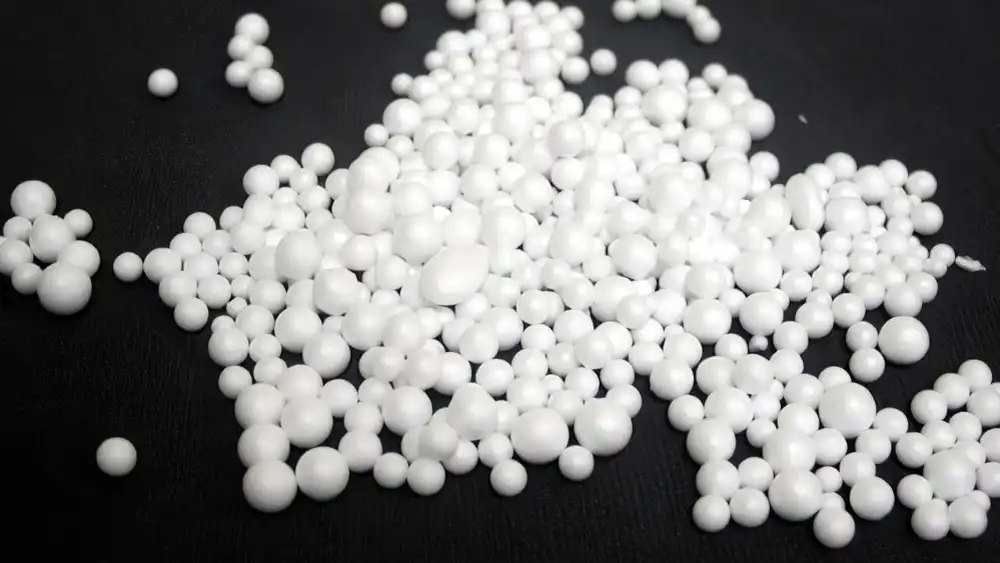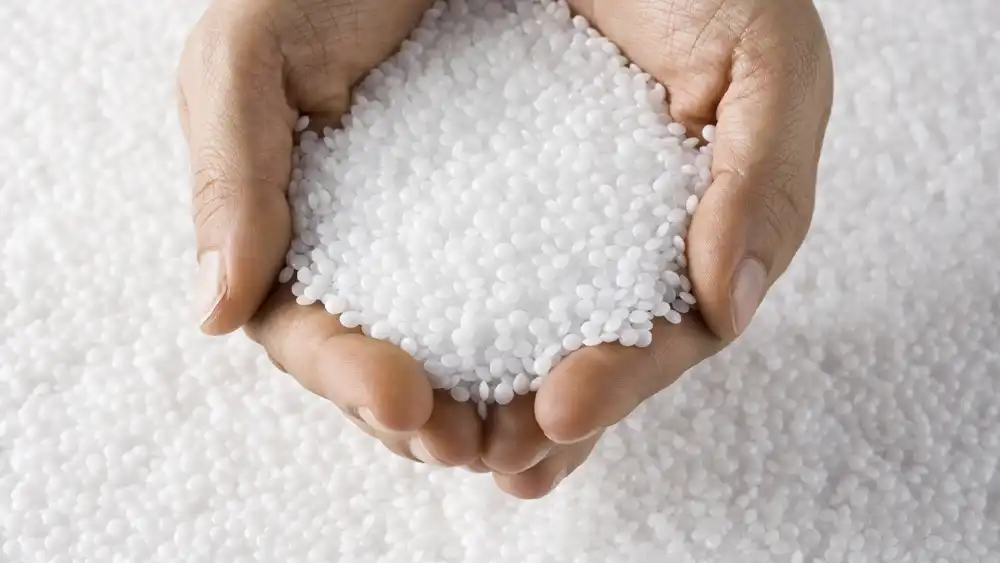In recent years, concerns have been raised about the toxicity of EPS beads. Are EPS beads toxic?
This article dives deep into the potential risks associated with EPS beads, their environmental impact, and alternative solutions.
Let’s explore the truth behind EPS beads toxicity and what it means for consumers and the environment.
What Are EPS Beads

Expanded polystyrene (EPS) beads are small plastic particles commonly used in various applications, including packaging, insulation, and crafting. These lightweight beads are favored for their versatility and affordability.
Is EPS Eco-Friendly?

EPS (Expanded Polystyrene) can be a complex material in terms of its environmental impact. While it has certain qualities that might be considered eco-friendly, it also poses challenges.
Pros:
- Lightweight: EPS is extremely lightweight, which means it requires less energy to transport compared to heavier materials. This can reduce fuel consumption and associated emissions during transportation.
- Insulation Properties: EPS is often used as insulation in buildings and packaging due to its excellent thermal insulation properties. This can contribute to energy savings by reducing heating and cooling needs in buildings.
- Recyclability: EPS can be recycled, although the process can be more complicated compared to other materials like paper or aluminum. When properly recycled, EPS can be reused in various applications, reducing the need for virgin materials.
Cons:
- Non-Biodegradable: One of the major drawbacks of EPS is that it is not readily biodegradable. It can persist in the environment for hundreds of years if not properly disposed of, contributing to plastic pollution.
- Resource Intensive: The production of EPS requires the use of fossil fuels and other non-renewable resources. This contributes to greenhouse gas emissions and further depletion of finite resources.
- Waste Management Challenges: EPS is bulky and lightweight, which can make it difficult to manage in waste streams. Improper disposal can lead to littering and environmental pollution.
While EPS has some eco-friendly qualities such as lightweight construction and recyclability, its non-biodegradability and resource-intensive production process present significant environmental challenges. Efforts to improve recycling infrastructure, reduce reliance on fossil fuels in production, and promote alternatives to EPS where possible can help mitigate its environmental impact.
Is EPS Foam Toxic
Expanded Polystyrene (EPS) foam, commonly used in packaging, insulation, and various consumer products, has raised concerns regarding its toxicity and environmental impact. Here are the key points regarding its toxicity:
Health Concerns
- Chemical Composition: EPS foam is made from styrene, a petroleum-based product. Styrene can be a health hazard if inhaled in significant quantities over a long period.
- Exposure During Manufacturing: Workers involved in the production of EPS foam may be exposed to styrene gas, which can cause irritation of the eyes, skin, and respiratory system. Long-term exposure to high levels of styrene has been linked to nervous system effects and possibly increased risk of leukemia and lymphoma.
- Consumer Use: For consumers, the risk is significantly lower. The amount of residual styrene in finished EPS products is typically very low, and under normal conditions of use, there is minimal exposure. However, it is still advised to avoid using EPS foam containers for hot foods and beverages, as heat can cause styrene to leach out.
Environmental Impact
- Non-Biodegradable: EPS foam is not biodegradable and can persist in the environment for hundreds of years, contributing to landfill waste and ocean pollution.
- Toxic Byproducts: When EPS foam is burned, it releases toxic substances, including styrene gas and other harmful compounds, which can be hazardous to both human health and the environment.
Safety Recommendations
- Proper Handling: Avoid using EPS foam products for high-temperature applications, such as hot foods and beverages, to minimize the risk of styrene exposure.
- Disposal and Recycling: Proper disposal and recycling of EPS foam can mitigate some environmental impacts. While not universally accepted, some recycling programs do handle EPS foam.
- Alternatives: Consider using safer and more environmentally friendly alternatives like paper, cardboard, or biodegradable packaging materials.
While EPS foam is not highly toxic under typical consumer use conditions, it poses certain health risks during manufacturing and when exposed to heat. Its environmental impact, primarily due to its persistence and potential to release toxic byproducts when burned, is a significant concern.
EPS Beads Toxicity
Expanded Polystyrene (EPS) beads, like other forms of polystyrene, are generally considered non-toxic under normal conditions of use. However, there are some considerations regarding potential toxicity:
- Chemical Composition: EPS is made from styrene, a synthetic compound derived from petroleum. Styrene monomers are used in the production of EPS, and while they are generally considered safe in their polymerized form (as in EPS), there are concerns about potential health effects associated with exposure to styrene vapors during manufacturing processes.
- Release of Chemicals: While EPS itself is inert and does not leach harmful chemicals under normal conditions, there is potential for the release of toxic substances if EPS is burned. When EPS is incinerated at high temperatures, it can release harmful gases and particulate matter into the air, including styrene, carbon monoxide, and other volatile organic compounds.
- Microplastics: EPS beads, like other plastic materials, can break down over time into smaller particles known as microplastics. These microplastics can absorb and concentrate pollutants from the surrounding environment, potentially posing risks to aquatic organisms if they enter water bodies.
While EPS beads themselves are generally considered non-toxic, there are concerns about potential health and environmental impacts associated with their production, disposal, and breakdown. It’s important to handle and dispose of EPS materials properly to minimize any potential risks to human health and the environment. Recycling EPS whenever possible can help reduce the need for incineration and the release of harmful substances into the environment.
Are EPS Beads Toxic?
Expanded Polystyrene (EPS) beads themselves are generally non-toxic.
EPS is a type of plastic foam made from polystyrene, a polymer composed of carbon and hydrogen atoms. The beads are typically inert and do not contain toxic substances that would pose immediate health risks under normal conditions of use.
However, there are some important considerations:
- Chemical Composition: EPS is derived from styrene, a synthetic compound obtained from petroleum. While styrene monomers are used in the production of EPS, they are polymerized during the manufacturing process, rendering the final EPS beads relatively inert. However, exposure to styrene vapors during manufacturing processes can pose health risks to workers in industrial settings.
- Potential Risks from Ingestion or Inhalation: While EPS beads themselves are not toxic, ingesting or inhaling large quantities of EPS beads could pose choking hazards or respiratory issues, particularly for young children or pets. Proper precautions should be taken to prevent accidental ingestion or inhalation.
- Environmental Impact: EPS beads can contribute to environmental pollution if not properly managed. When disposed of improperly, EPS beads can accumulate in the environment, leading to litter and potential harm to wildlife. Additionally, EPS beads can break down over time into smaller particles known as microplastics, which can have ecological impacts when they enter ecosystems.
EPS beads themselves are not considered toxic, but there are potential risks associated with their production, use, and disposal. Proper handling and disposal practices are important to minimize any potential adverse effects on human health and the environment. Recycling EPS whenever possible can help reduce the environmental impact of EPS beads by diverting them from landfills and reducing the need for new EPS production.
FAQs (Frequently Asked Questions)
- What are EPS beads made of? EPS beads are made from expanded polystyrene, a type of plastic derived from styrene monomers.
- How do EPS beads impact the environment? EPS beads are non-biodegradable and can persist in the environment for long periods, contributing to pollution and harming ecosystems.
- Are EPS beads safe for packaging food? While EPS beads are commonly used for food packaging, concerns have been raised about the potential migration of harmful chemicals into food products.
- Can EPS beads be recycled? Yes, EPS beads can be recycled, but the process is not widely available and may vary depending on local recycling facilities.
- What are the alternatives to EPS beads? Biodegradable materials such as starch-based packing peanuts and recycled paper products offer eco-friendly alternatives to EPS beads.
- Are there any regulations governing the use of EPS beads? Regulations regarding the use and disposal of EPS beads vary by region, with some areas implementing restrictions to minimize environmental impact.
Conclusion:
In conclusion, while EPS beads offer convenience and versatility, their potential toxicity raises valid concerns about their safety and environmental impact. By exploring alternative materials and adopting sustainable practices, we can reduce reliance on EPS beads and protect the planet for future generations.
